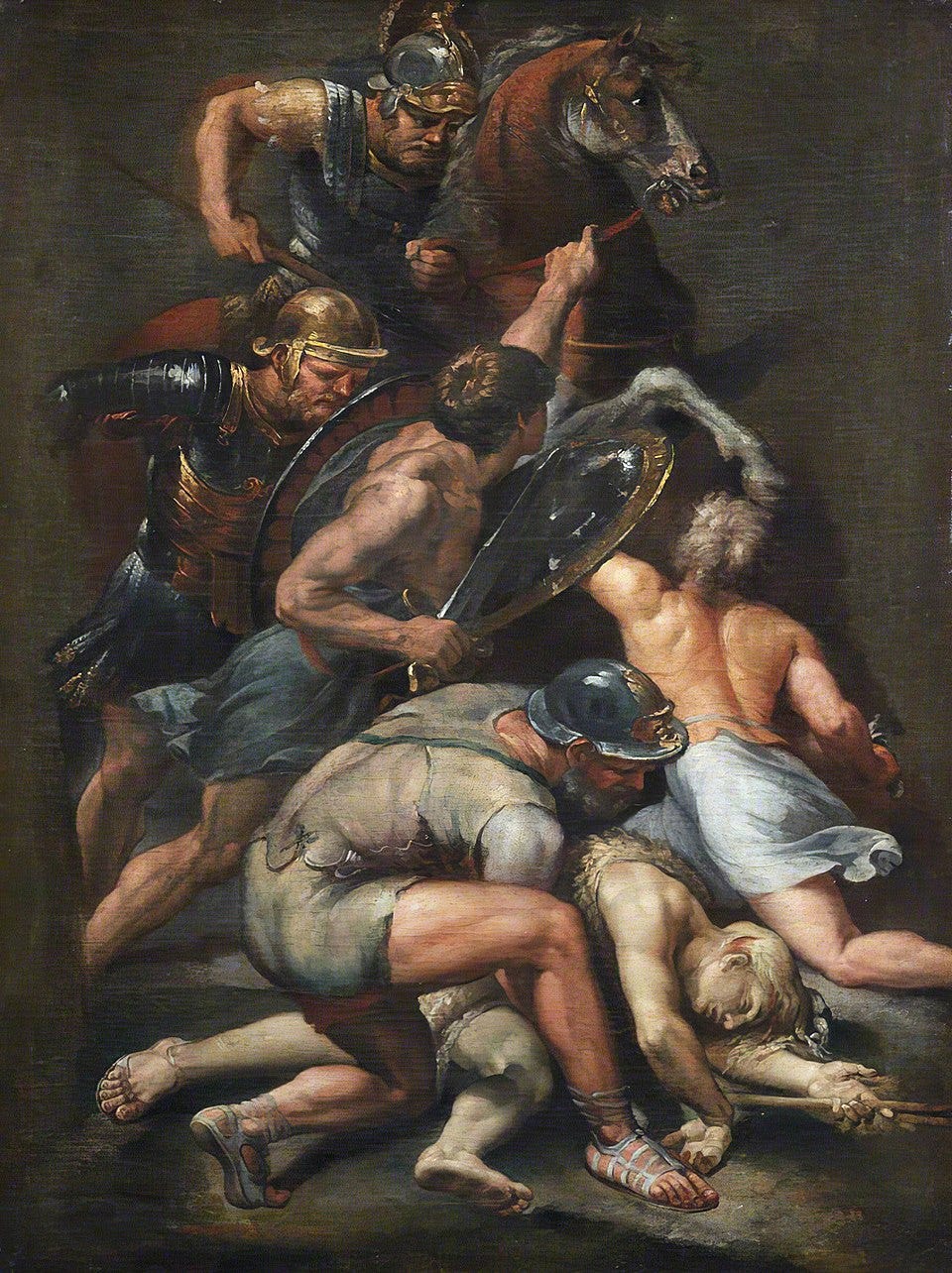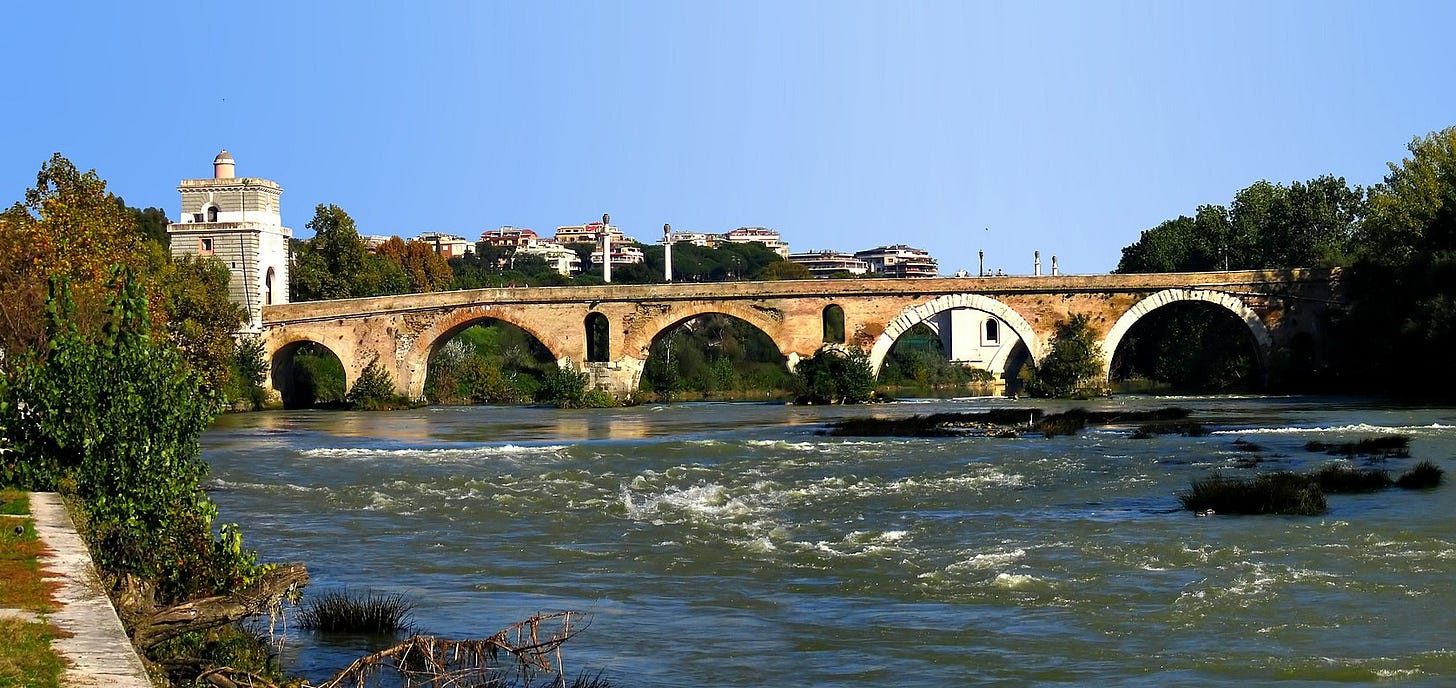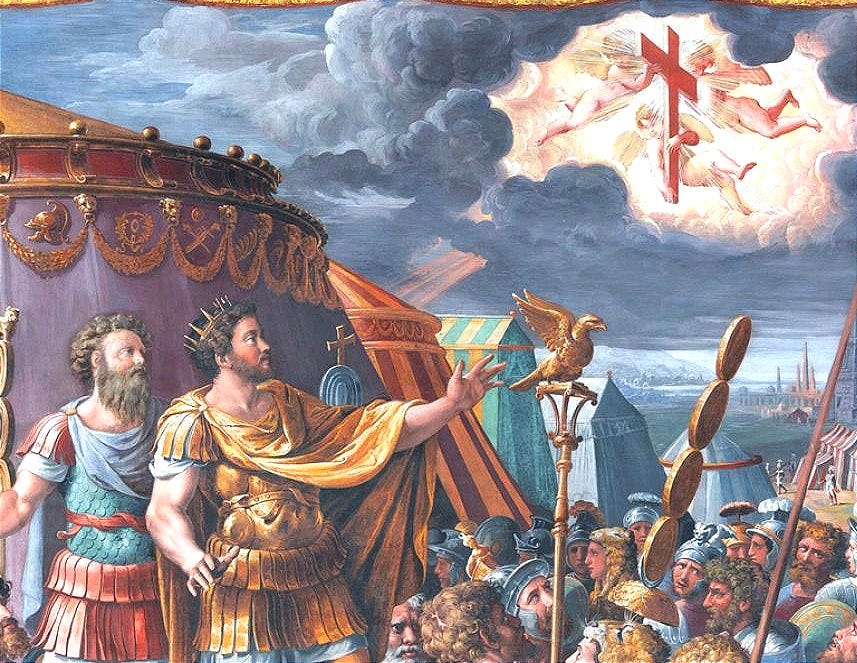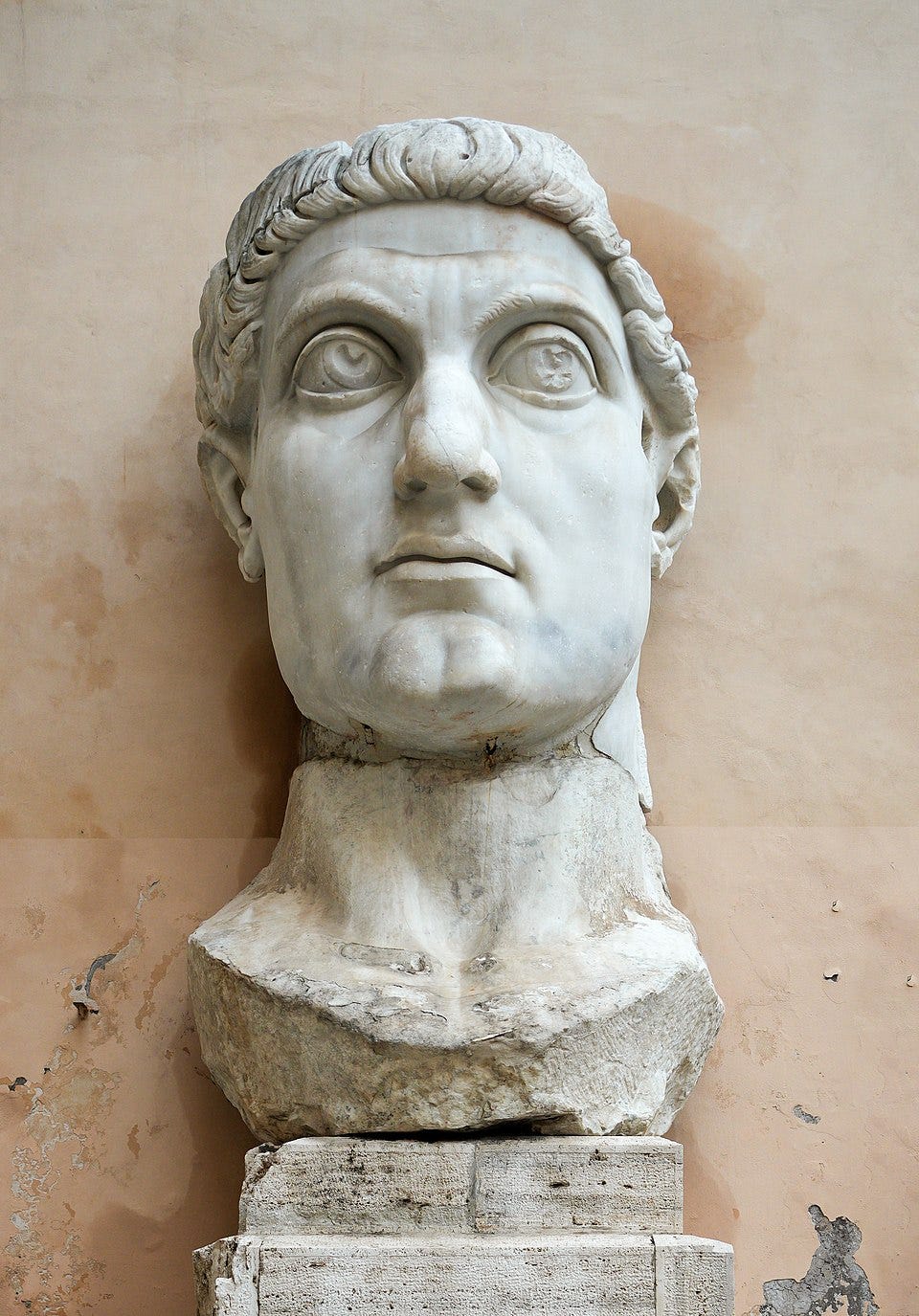Promises Made, Promises Kept
How a vow made on the eve of battle changed the course of history...
The night before the Battle of the Milvian Bridge, Constantine faced the most decisive test of his life.
At this point, he only ruled over part of the Roman Empire. His rival, Maxentius, held Rome itself, commanded a larger army, and had the full backing of the Roman aristocracy. He was seen as the restorer of tradition and the defender of the pagan gods.
For Constantine, almost every sign pointed to disaster. But then something incredible happened.
That night, Constantine claimed to see a vision — a bright cross in the sky with the words In hoc signo vinces — “In this sign, you shall conquer.” Immediately after, he ordered his men to paint the Chi-Rho, a Christian symbol derived from the first two Greek letters in Christos (ΧΡΙΣΤΟΣ), on their shields.
His men were to go into battle under a banner they barely understood, invoking a God most had never worshipped. But the craziest part?
The next day, they won.
What followed determined not just the weight of Constantine’s word, but the future of the entire world as we know it. Today, we tell the story of Constantine’s vow, how he made good on it, and what his example reveals about the spiritual power of promises…
This week at INVICTUS, we commemorate the 1,695th anniversary of Constantinople’s founding.
To get exclusive deep-dive articles about Constantine the Great and what the city he founded reveals about the Romans’ hope for the future of the world, click below to join INVICTUS now:
The Vow on the Battlefield

In 312 AD, the Roman Empire was divided and unstable. Constantine had fought his way to power in the western provinces, but his position remained fragile. To rule without question, he had to take Rome.
On the eve of battle, he turned to the God of the Christians. To an outsider, it was a strange God to turn to — the Christian community had faced decades of persecution and had no political power, temples, or army of their own. To invoke their God on the battlefield was tantamount to staking everything on a far-fetched hope.
But according to later accounts, Constantine prayed to the Christian God and vowed to serve Him if he’d be granted victory the next day. The dream that followed confirmed his course, as he was told to bear the sign of Christ in combat.
That night, Constantine ordered his soldiers to mark their shields with the Chi-Rho. Most didn’t even know what it meant, but it didn’t matter. He was taking a leap of faith, forever binding his future reign — if he would live to have one — to the symbol of an outlawed religion.
The next morning, Constantine and his men advanced towards the city. Maxentius drowned as his forces were defeated, and Constantine entered Rome in triumph. It was a total victory.
But for as difficult a struggle as the campaign had been, now came the truly hard part — keeping the vow he had made…
The Weight of a Promise

In the months that followed, all eyes were on Constantine. He had taken power with Christian symbols on his banners, and stories of the vision had already begun to spread. Many wondered whether it was a political trick, a move designed to win over a growing sect. Amidst the mutterings, the pressure was on Constantine to see what kind of ruler he would become.
But in 313 — less than a year after the battle — Constantine met with his co-emperor Licinius in Milan. Together, they issued a new imperial decree that would shatter the status quo and change the course of history.
The resulting Edict of Milan granted legal status to Christianity and ordered that all confiscated church property be returned. While it didn’t make Christianity the official religion of the empire, it did make a public commitment to freedom of worship and restored dignity to a faith that had long been pushed underground.
Constantine had kept his word. With the stroke of a pen, he transformed a vow made in crisis into the cornerstone of Roman imperial policy. It was a decision that carried real political consequences — it reshaped Constantine’s relationship with the Roman elite, empowered bishops to act as political figures, and allowed the fledgling Christian Church to grow in strength and confidence.
Constantine had asked for victory, and pledged his service in return. Now, as emperor, he was finally beginning to prove that his promise had not been for show…
A Millennial Legacy

Years after his triumph, Constantine returned to the original vow he had made. He sent his mother, Helena, to the Holy Land with orders to uncover the sites of Christ’s life, death, and resurrection. When she identified the location of Christ’s tomb, Constantine got to work immediately.
He ordered the construction of the Church of the Holy Sepulchre and saw that it was carried out with imperial support. The project became a personal priority for Constantine, who was now acting less as a politician and more as a man who had made a vow and was intended to see it through.
His promise had been to serve God, and he was now busy carving that promise into stone — both metaphorically in the laws he legislated, and literally in the churches he erected. Today, the Edict of Milan still echoes in every principle of religious freedom in the modern West. The Church of the Holy Sepulchre still stands in Jerusalem, where it welcomes hundreds of thousands of pilgrims annually.
The structures Constantine built — political, architectural, and spiritual — outlasted his reign and set the course of history for the centuries that followed.
His legacy is a remarkable testament to the power of what happens when a man keeps his word.
Takeaways
1) What You Vow in Private, Live in Public
It’s one thing to keep a promise you make publicly, and another to keep one you make privately. To make good on the latter, of course, is a much better test of a man’s character.
Constantine could have gone back on his word once victory was secured, but he instead decided to commit. His public actions that followed revealed the weight of the vow he had made in private.
2) Govern Yourself by What You’ve Pledged
For your commitments to truly mean something, they must lead — not follow — your ambition.
When Constantine gained power, he let his vow shape imperial law, restructure his alliances, and determine the future of his rule. He didn’t think of his pledge simply as something he promised at one specific moment in the past, but as something he was called to live out every day.
3) Build with the Future in Mind
A kept vow doesn’t end the moment it’s fulfilled, but rather lives on in what comes after it.
Constantine carved his promise into the world through churches and decrees that continue to impact millions of lives around the world today. Similarly, the vows you make good on have the potential to set something in motion that will outlive you — so be conscious of not only what you vow, but how you fulfill it.
Want to dive deeper?

To learn more about Constantinople and the man who founded it, join me and James this Thursday at 9am ET as we go live on X.
Visit my X account at 9am to access the livestream — once it ends, the stream will be added to our Members-Only Video Archive for you to catch the replay.
On Thursday, our premium subscribers get a deep dive article exploring Constantine’s vision for "the “New Rome” — and how he saw opportunity where no one else did.
If you’re not already a premium subscriber, please consider joining below:
Ad finem fidelis,
-Evan



